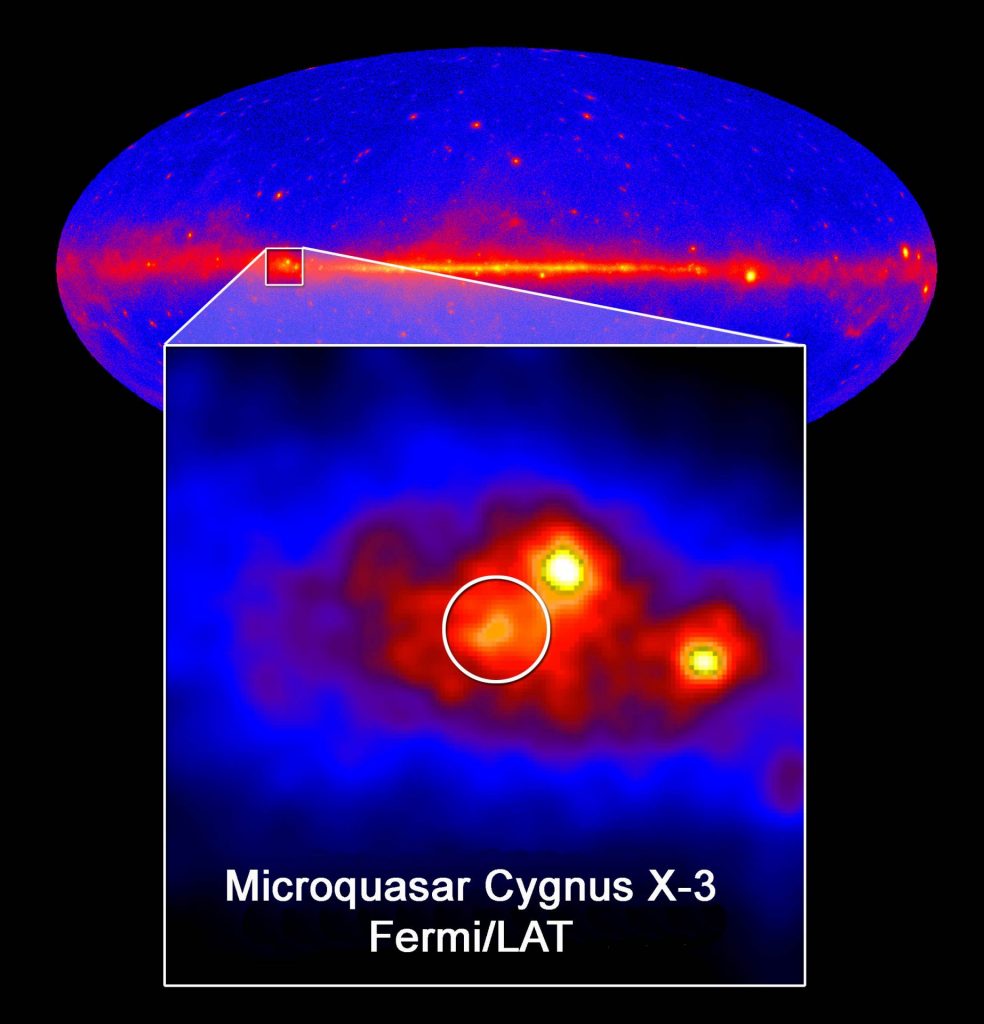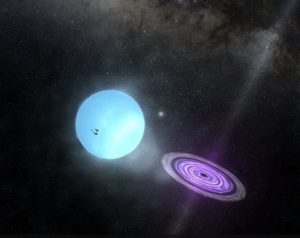Microquaser gamma emission observed for the first time
For the first time, the high-energy gamma rays emitted by a microquasar have been spotted with certainty, thanks to NASA’s Fermi telescope. The observation of the microquasar Cygnus X-3 by a French team (CEA-IRFU, CNRS-INSU and IN2P3, University of Paris Diderot, Joseph Fourier University) teaches us more about how these particular sources function and how a compact object orbiting a star can hurl a mass equivalent to the Moon’s through the interstellar medium at almost the speed of light. The study is published in Science Express on 26 November 2009.
– for more information : see the French version


Contact: S. Corbel
“Modulated High-Energy γ-ray emission from the Microquasar Cygnus X-3″
Fermi LAT Collaboration
including CEA/IRFU/Service d’Astrophysique and AIM (CEA/CNRS/Université Paris Diderot)
published in the journal Science, on the Science Express website (26 November 2009)
electronic version (format PDF)
– see: the CEA-CNRS-IN2P3 press release (26 November 2009)
the NASA press release (26 November 2009)
– also see: Alert signal given before matter is ejected from a black hole (21 December 2007, in French)
A microquasar’s journey through the galaxy (23 January 2003, in French)
The first extra-galactic microquasar? (23 January 2003, in French)
X-ray image of jets of matter around a black hole (4 October 2002, in French)
Microquasars (special report, in French)
Written by: Jean-Marc Bonnet-Bidaud, S. Corbel, M. Vandermersch


